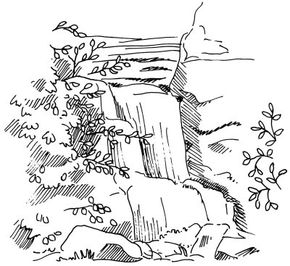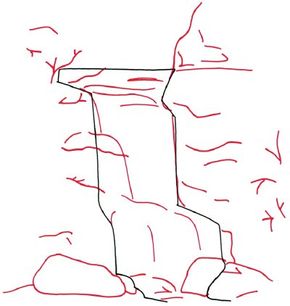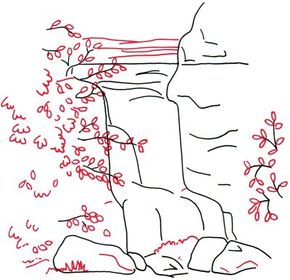The centerpiece of this landscape is a majestic, rushing waterfall. Surrounded by stone and plants, this waterfall landscape promises a wonderful escape.
In just four steps, we'll show you how to draw this waterfall landscape. You can draw it freehand while looking at your computer monitor, or you can print out this article to get a closer look at each step.
Advertisement
On each page, we'll show you an illustration of each step and then give you a description of how to draw it. Follow the red lines in each illustration to learn exactly what to draw in that step. The lines drawn in previous steps are shown in gray.
We'll start by sketching a rough outline on the next page.
Advertisement



